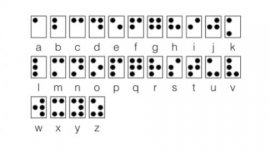Volitan
Hot Rolled
- Joined
- Sep 16, 2006
- Location
- Long Island, New York
I have a job coming up which will be hundreds of brass plates that need to have braille on them. It seems the prevailing method, which is among sign makers, is to drill a hole and press in steel or plastic balls with a tool like this, from a company called Accent Signage (they're having website problems right now, can't get a link):

This is good because we have to engrave a different word on each plate with braille to match, so we can do the braille right in the CNC at the same time.
The downside is that they're saying pushing stainless balls into brass will wear the tool out quicker than putting them into plastic, such as a sign in a building, so it will need repair more often. Also, they strongly recommend laying out some adhesive first which adds a couple steps to each one. I could use acrylic balls but would still need adhesive because if the press fit into brass is too tight the balls will crack.
So I thought I'd ask here, anyone have a better method for making braille in a production environment?
Thanks

This is good because we have to engrave a different word on each plate with braille to match, so we can do the braille right in the CNC at the same time.
The downside is that they're saying pushing stainless balls into brass will wear the tool out quicker than putting them into plastic, such as a sign in a building, so it will need repair more often. Also, they strongly recommend laying out some adhesive first which adds a couple steps to each one. I could use acrylic balls but would still need adhesive because if the press fit into brass is too tight the balls will crack.
So I thought I'd ask here, anyone have a better method for making braille in a production environment?
Thanks



